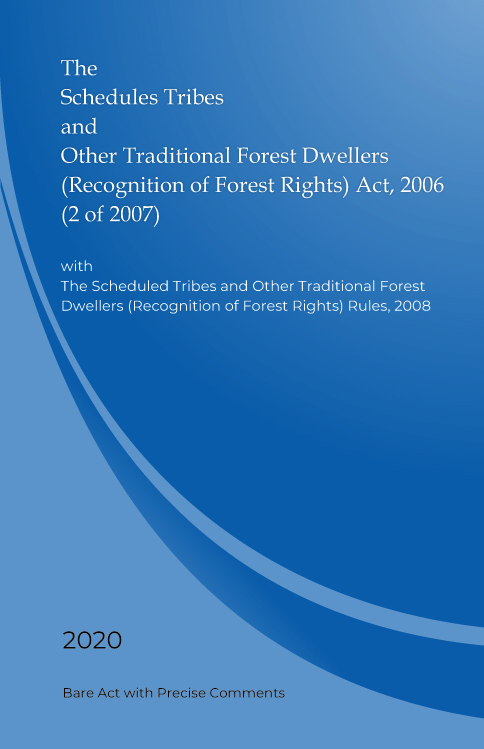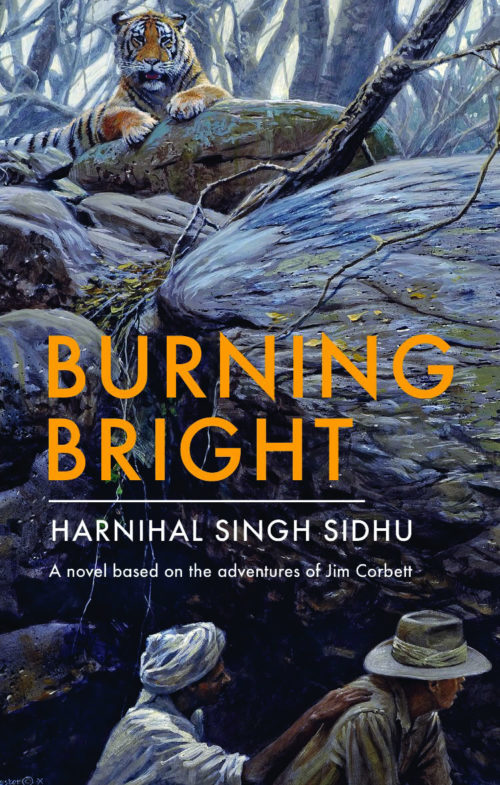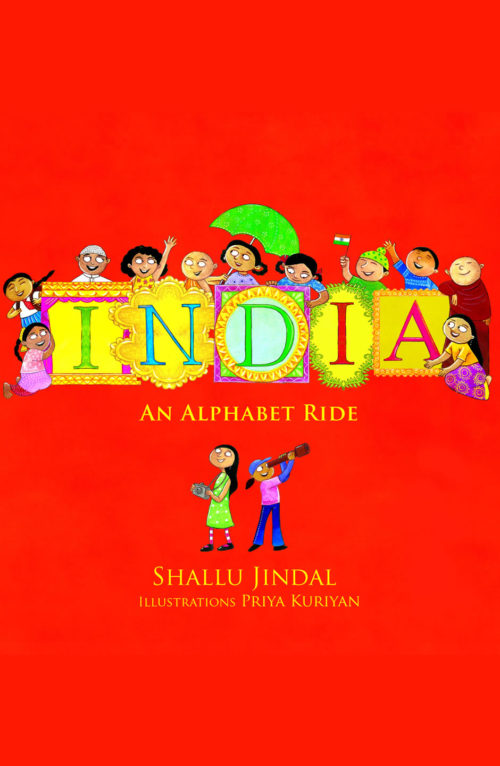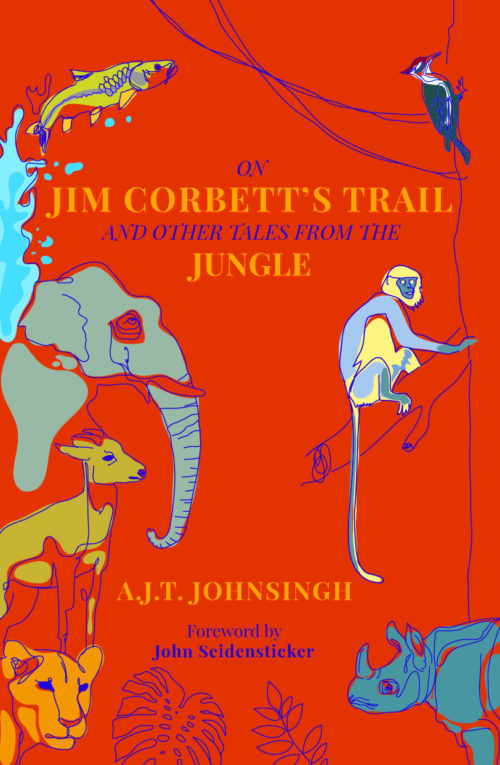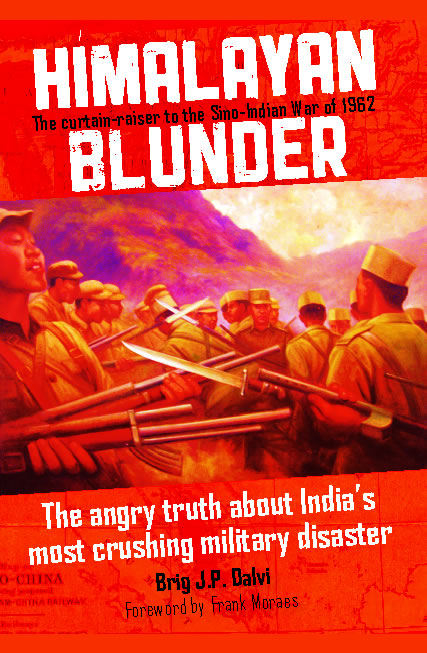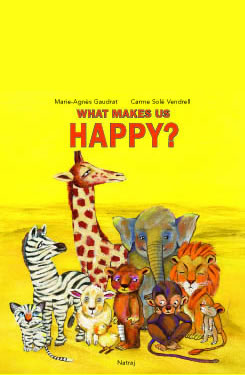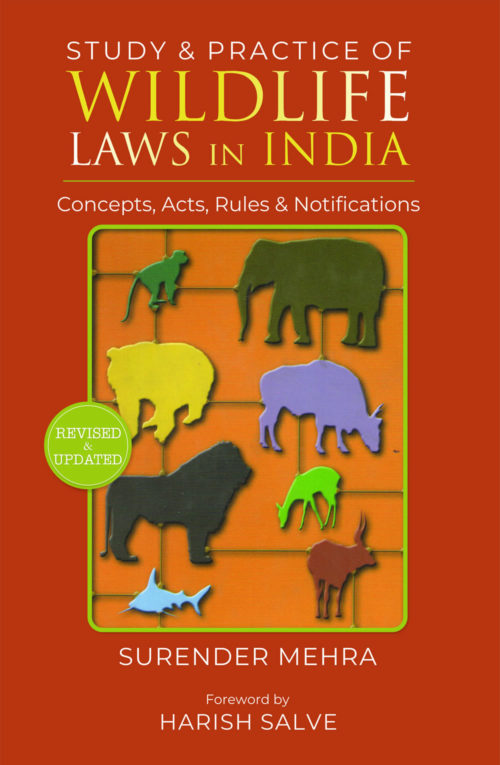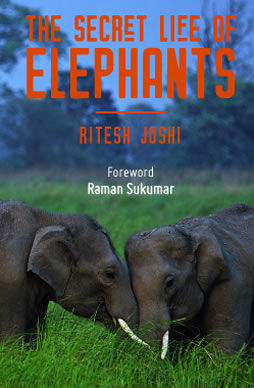-
-
This book contains the bare act alongwith the Tribal Rules.
-
The man eating tiger has speed, agility, muscle power, lightning reflexes and a ferocious killer instinct. It weighs 500 lb. The man has a cool head, a sure eye, a rifle and two brass cartridges. He weighs only 160 lb. The tiger growls, bursts out of the long grass, and launches itself . . .This was the drama that played out in the life of the legendary writer and conservationist, Jim Corbett, on several occasions. For him, the hunt was not about trophy tiger skins, or for the prestige of being a famous shikari – but to save lives when a man eater was on the rampage. Born in Kumaon, Corbett grew up in the jungle. He was well versed with its laws, and heunderstood its language. This hunter of the man eaters went on to become a die-hard conservationist, working to preserve and promote the majestic tiger. He harboured a great love for India and its people – of all castes and creeds, which is evident through all his writings.In a novel inspired by Jim Corbett's life and writings, author and conservationist, Harnihal Sidhu tells the epic tale of India’s most famous tiger hunter and conservationist. Corbett's journey was a difficult one, with moments of wild joy, suffering and heartbreak.Burning Bright is not a biography, a formal history or an academic study. It is a gripping tale told by a charmed storyteller, based on the life of a great man. Sometimes, the shortest road to the clearest view runs through the land of fiction.
-
"A Wonderful Concept." - RUSKIN BOND LEARNING ABOUT INDIA WAS NEVER SO MUCH FUN! They say a picture is worth a thousand words. We agree. We say that a single alphabet is worth a hundred words. You will agree. "INDIA:An Alphabet Ride" uses illustrations and A, B, C to tell you everything you neded to know about the country without the boredom of formal textbooks. Get ready for a thrilling ride through India's states and cities, visit its heritage sites, learn about its customs, tast the diverse food and dance to its many festivals and sounds. -
This book is nature writing at its best from the heart of India's forests. Dr. Johnsingh takes the readers across India's national parks and tiger reserves and as the reader takes in the sense and smell of the forest, the author shares his environmental concerns for the area and possible solutions for conservation. Jim Corbett has been a lifelong inspiration for the author and the first section of the book traces Corbett's paths along the forests as they were decades ago. According to John Seidensticker who has written the foreword, "Going for a walk in an Indian forest with Dr. A.J.T. Johnsingh is simply one of the finest experiences you can have in life. There is his good humour. There is the joy in his steps when he is walking in the forest. He walks to live, and lives to walk – and it shows. And you feel good because he is so at home in the forest. He is ever alert; completely aware of all that is going on around him…. Dr. Johnsingh is legendary for his ability to find and see wildlife. Nothing goes unnoticed… And if you are impressed with his enthusiasm on a walk in the forest, just wait until you go looking for mahseer with him."
-
"Himalayan Blunder: The Angry Truth About India’s Most Crushing Military Disaster" is Brigadier J. P. Dalvi’s retelling of the Sino-Indian war that took place in 1962 - a war that India lost. Dalvi fought the war as the Commander of the 7th Infantry Brigade in NEFA (North-East Frontier Agency). His account of the war is graphic and telling. He was captured by the Chinese forces and held for seven months. As a participant of the war, he was privy to all that went on at the battlefield as well as behind the scenes. Based on his firsthand experiences, he recounts the events that occurred between September 8, 1962 and October 20, 1962. As early as 1951, China silently and steadily began to work its way onto Indian soil. Even in the face of indisputable evidence, India insisted on maintaining cordial relations with the Chinese. China seemed only too happy to play along. Dalvi narrates the manner in which India’s own political leadership traitorously worked against its cause. In no uncertain terms, he holds three men responsible for India’s defeat - Jawaharlal Nehru, Krishna Menon, and General Brij Mohan Kaul. Issuing orders from Delhi, they seemed to be clueless about the situation on the battlefield. Undoubtedly, when they were rushed into battle, the Indian soldiers - underfed, ill-equipped, and unprepared as they were - never stood a chance against the powerful Chinese army. Regardless of that, the soldiers fought bravely and laid down their lives for their homeland. Dalvi claims that the apathy and the sheer ineptitude of those at the helm of India’s political affairs sacrificed hundreds of valuable lives. Brigadier Dalvi’s detailed narrative of the massacre of the Indian soldiers, a horror that he witnessed firsthand, is heart-rending. The book was published in 1969. Among all the books based on the subject of the 1962 Sino-Indian war, this book is considered to be one the most striking and authentic versions. Due to its sensitive subject matter and its portrayal of India’s leaders in a harshly negative light, the book was banned by the Indian Government upon its release. Brigadier John Parashuram Dalvi was an Indian Army officer. During the Sino-Indian War of 1962, he was the commander of the Indian 7th Brigade, which was destroyed, leading Dalvi to be captured by the People's Liberation Army on 22 October 1962. Dalvi was commissioned into the Baluch Regiment. To the end of World War II he served with the regiment's 5th Battalion. He took part in Field Marshal Sir William Slim's pursuit of Japanese Army. From October 1944 to March 1945 he saw fighting with 19th Indian Division notably at the Crossing of the Irrawaddy. For his services he was mentioned in despatches for gallant and distinguished service. In 1945 he was selected to join the staff of General Sir Montagu Stopford, GOC XXXIII Corps and later GOC-in-C of 12th Army Burma In 1947 he was posted as instructor to Indian Military Academy, Dehradun. He was then moved to 5 Gorkha Rifles as 2nd in command. In 1949 Dalvi was attached with Brigade of the Guards. In 1950, he was selected for Staff College, which he graduated in 1951. He then commanded the 4th Battalion, Brigade of the Guards and later 2nd Guards. In October 1960 he was given an accelerated promotion to be appointed as Brigadier Administration to XV Corps. In January 1962, he was given the Command on 7th Infantry Brigade in NEFA and fought in the Sino-Indian War. He was taken Prisoner of War on 22 October 1962 and was repatriated in May 1963. On his return to India, he wrote his account of the war. He died of cancer in 1980.
-
Very simply, this publication describes the philosophy which distinguishes the U.S. Marine Corps. The thoughts contained here are not merely guidance for action in combat but a way of thinking. This publication provides the authoritative basis for how we fight and how we prepare to fight. This book contains no specific techniques or procedures for conduct. Rather, it provides broad guidance in the form of concepts and values. It requires judgment in application. Warfighting is not meant as a reference manual; it is designed to be read from cover to cover. Its four chapters have a natural progression. Chapter 1 describes our understanding of the characteristics, problems, and demands of war. Chapter 2 derives a theory about war from that understanding. This theory in turn provides the foundation for how we prepare for war and how we wage war, chapters 3 and 4, respectively.The U.S. Marine Corps is a branch of the United States Armed Forces responsible for providing power projection from the sea, using the mobility of the United States Navy to deliver combined-arms task forces rapidly. It is one of seven uniformed services of the United States. In the civilian leadership structure of the United States military, the Marine Corps is a component of the United States Department of the Navy, often working closely with U.S. naval forces for training, transportation, and logistic purposes; however, in the military leadership structure the Marine Corps is a separate branch.
-
This kind of War has been studied by two generations of soldiers. Fehrenbach describes good decisions and bad ones with insight and expertise. But what he does best of all and what is so memorable, is his eloquent, sometimes painful description of the Gls who must bear the vurden of those decisions. That is the awful beauty of this book - it cuts straight to the heart of all the political and military errors, and reveals the brave souls who have to bleed and die for mistakes made. A timely reissue of a military classic. Theodore Reed Fehrenbach, Jr. was an American historian, columnist, and the former head of the Texas Historical Commission (1987-1991). He graduated from Princeton University in 1947, and had published more than twenty books, including the best seller Lone Star: A History of Texas and Texans and This Kind of War, about the Korean War. Although he served as a U.S. Army officer during the Korean War, his own service is not mentioned in the book. Fehrenbach also wrote for Esquire, The Atlantic, The Saturday Evening Post, and The New Republic. He was known as an authority on Texas, Mexico, and the Comanche people. For almost 30 years, he wrote a weekly column on Sundays for the San Antonio Express-News. T.R. Fehrenbach was 88 years old at the time of his death. -
"We need to talk to our children about what true happiness really means. If we dont, the kind of society we live in will lead them on to the incorrect and untrue track making them materialistic, selfish and competitive.This joyful, practical and poetic book will help adults and children talk and reflect on what makes us truly happy, and move towards the real joys of life! - Christophe André, renowned French Psychiatrist This unique book with unusual open and close flaps, chamring illustrations in large format asks simple questions that make little children think of how the simple things they can do and learn will help them grow up into happier and more content adults. Questions like how will you like to win, alone or by taking others along? When you see someone in trouble, will you ignore them or help them?
-
This is the first ever comprehensive book on wild life law enforcement in India. It explains the various interpretations and legalities pertaining to Indian wild life laws. The details of the case laws provided offer a better understanding of the procedures involved in the investigation and trial of wild life crimes.
Part I of the book deals with the conceptual topics like evolution and salient features of wild life laws, legal procedures involved in investigation and trials of wild life cases, powers and privileges of forest officers, CITES and its legal enforcement in India, legalities of captive management and legal provisions related to the Forest (Conservation) Act, 1980. Part II deals with various provisions and amendments made thereupon under the Wild Life (Protection) Act, 1972. These provisions are further elaborated through relevant case laws and commentaries for better understanding of a particular provision. Part III discusses rules, policies, statutes, and guidelines related to wild life law enforcement issued at national and international fora. Part IV of the handbook deals with other related laws such as the Wild Birds and Animals (Protection) Act, 1912, the Elephants Preservation Act, 1879, and the Prevention of Cruelty to Animals Act, 1960.
The history of conservation in India dates back several centuries – it carries utmost importance in the shastras, epics and other social codes. However the first ever comprehensive legal code was formulated as the Wild Life (Protection) Act, in 1972. The laws related to wildlife enforcement are thus still at an evolving stage.
We urgently need strong wild life law enforcement in India as the laws exist but poor implementation and systemic deterrents restrict effective pro-action. This book delves into a detailed analysis of the laws in place in India – while it explains the laws, the book also provides extensive case studies.
The book will be very useful for Forest officials and staff dealing with various issues in wild life management in the field, forest authorities dealing with various issues in captive management such as Zoo Keeping, transportation and immobilization of animals in distress. This book will further help wild life enforcement agencies, police personnel dealing with prevention, detection, investigation and trial of wild life crimes, customs and other enforcement agencies dealing with enforcement of regulations under international conventions and protocols, individuals, NGOs and other authorities dealing in litigations and writ petitions in the High Courts and the Supreme Court.
SURENDER MEHRA is a member of the Indian Forest Service (batch of 1999). He graduated as Bachelor of Technology in Electronics and Telecommunication Engineering from Regional Engineering College, Kurukshetra in 1995 and in the same year he was selected for the Indian Engineering Services. In 1999, he joined the IFS.
He received the Uttaranchal State Forestry Award in 2003 for ‘Excellence in Civil Services Reforms’. He completed his PG Diploma in Wild Life Management from Wildlife Institute of India, Dehradun in 2006-07. He also holds a PG Diploma in Environmental Law from National Law School, Bengaluru.
He has worked as Deputy Conservator of Forests, Haldwani (Nandhaur Wildlife Sanctuary), Corbett Tiger Reserve and Rajaji National Park & Rudraprayag. He has also worked as faculty at the Central Academy for State Forest Service, Dehradun. In recent years, he worked as Conservator of Forests, Western Circle, Haldwani and Chief Conservator of Forests and Field Director, Corbett Tiger Reserve.
He has written the First Management Plan of Nandhaur Wildlife Sanctuary. He successfully conducted the Wild Life Monitoring study in the Western Circle and also authored its report titled ‘Status of Tigers, Habitats and Corridors in Western Circle, Uttarakhand'.
His fields of interest are Wildlife Management, Legal issues in Forests and Wild Life, Information Technology, GIS and Remote Sensing and Wildlife Photography. He has also authored a book titled “Legal Forestry” (2004).
He is currently posted as Deputy Inspector General, National Tiger Conservation Authority, in New Delhi and is also pursuing his Ph.D in Wildlife Sciences from Wildlife Institute of India, Dehradun.
-
Known as the Father of India’s Space Programme, Vikram Sarabhai’s interests included space and nuclear energy, architecture, industry and business, institution building, management development, arts, music, and theatre. He was a scientist and an entrepreneur, an educator, and a businessman. When he passed away unexpectedly at the young age of 52, he left behind a legacy few can match, having set up internationally reputed institutions and organisations that have made India proud and put us on the world map. "Dr. Sarabhai was a young person with great wisdom. There is a French saying that "if age could do and youth had wisdom, it would be a wonderful combination". Vikram Sarabhai had that combination. He was a fine blend of the thinker and doer. No one can lead a meaningful life today without combining the two." – Indira Gandhi
-
This book is a unique and unusual blend of field work, anecdotes, observations and research on the lessor known behaviour patterns of Asian elephants. Written in an easy style, the book is of equal interest to the expert and the layperson. The author, a scientist, spent more than a decade observing elephants in Rajaji National Park, in India. The behaviour patterns documented in this book reflect the changing habitat and ecosystem, raising questions, and observations on new management techniques needed to address conservation challenges for wildlife in India. Praise for the book: This is an excellent book. Having worked with African elephants all my life, I can see the similarities and differences between the African and the Asian elephants. I liked the way Ritesh has combined statistics and research with stories. -Dr. Cynthia Moss, Director, Amboseli Trust for Elephants, Nairobi

